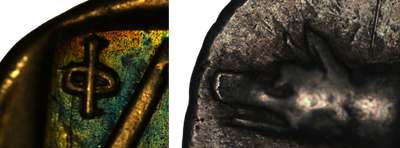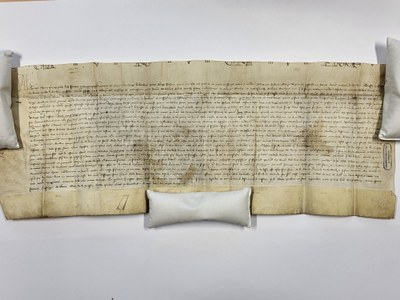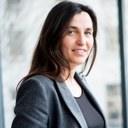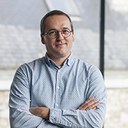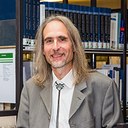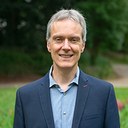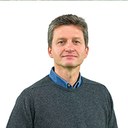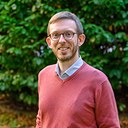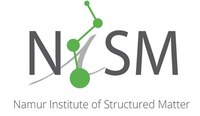PHOENIX | Can Physics and Artificial Intelligence Induce New Paradigms in History?
The information about the PHOENIX project is also available in French here...
The project
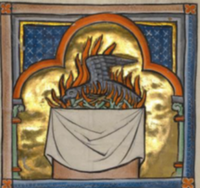 |
The PHOENIX project seeks to renew our understanding of medieval parchments and antique coins. Artificial intelligence will be challenged to analyse data generated by materials characterization. This joint study will address questions about the production chain and the use of these objects and materials in past societies. Like the Phoenix which regenerates itself from age to age, we believe that the introduction of machine learning methods in heritage sciences will open a new age in this field.
Illustration: Illumination representing a phoenix - The J. Paul Getty Museum, Ms. Ludwig XV 3, fol. 74v (around 1270). |
Project synopsis
For several years now, heritage sciences have been enjoying particularly strong growth. Deeply interdisciplinary, this field of research aims to bring the humanities and natural sciences into dialogue with a view to improving our knowledge of heritage objects, be they renowned works of art or “ordinary” artefacts discovered during excavations. Building on existing synergies at UNamur, and extending these by using artificial intelligence, this project aims to renew our understanding of two types of heritage objects:
Ancient Greek silver coins
Illustration: Detail of the reverse and observe side of two silver triobols, Argos, second half of the 2nd century BC (Hackens Collection, 76 and 65). |
Parchments used as a medium for medieval and modern writing
Illustration: Charter - Donation made on the entry into the monastery of Alice de Berwier, who joined her aunt at the abbey of Notre-Dame du Vivier (24 May 1421, Archives de l'État à Namur, Archives ecclésiastiques, no. 3040/2/2). |
Although these artefacts have different material characteristics, their study here is informed by a common set of questions concerning the dating, provenance, chain of operations and uses of these objects in past societies.
Two bodies of documentation are used. On the one hand, a batch of over 150 silver coins linked to the city of Argos, now part of a private collection assembled by Tony Hackens (1939-1997), formerly Professor of Archaeology at UCLouvain. On the other hand, a collection of several hundred medieval and modern charters from the collection of the Cistercian abbey of Notre-Dame du Vivier (Marche-les-Dames, Namur), now held by the State Archives in Namur. Using non-invasive characterisation techniques - in particular infrared and Raman spectroscopies, time-of-flight secondary ion mass spectrometry (ToF-SIMS) and ion beam analysis (IBA) - the aim is firstly to identify the physico-chemical properties of these materials and determine their elemental composition. Secondly, the use of machine learning tools helps to develop automatic learning models that speed up the processing of “raw” data and reveal trends that are still poorly identified.
Although the objects and materials studied are radically different in terms of their forms and compositions, the questions guiding their study are the same. For each of the two projects, the intention is to:
- automatically establish, within a reasonable chronological range, the date of production of the artefact;
- automatically classify the objects according to the material used (ore; animal species and anatomical region);
- automatically classify them according to the manufacturing process (identification of the metallurgical process for smelting silver; definition of different qualities of parchment);
- compare the predictions provided by artificial intelligence tools with those of traditional methods;
- renew our historical knowledge of these objects.
Planned to last five years (2024-2029), the project will be divided into three interlocking phases:
- an initial period of data collection and interpretation from a physico-chemical perspective (doctorate);
- the application of artificial intelligence tools to the massive quantities of data generated during the first stage, with a view to identifying new interpretations (post-doctorate 1);
- a phase of historical interpretation of the results, in which the aim will be to bring the results of the analyses into resonance with the material characteristics of the selected objects with a view to improving their understanding (post-doctorate 2).
Ultimately, on an institutional level, the project could serve as a springboard for setting up a research centre dedicated to heritage sciences at UNamur. This would provide a meeting place for the humanities and natural sciences, focusing on common research topics.
The team
Principal Investigators (PIs)
|
Francesca Cecchet (Physics) |
Julien Colaux (Physics) |
Olivier Deparis (Physics) |
Christophe Flament (History) |
Laurent Houssiau (Physics) |
Alexandre Mayer (Physics) |
Nicolas Ruffini (History) |
Dr Nicolas Gros (Physics)
Post-doctorate 1: hiring scheduled for the 2025-2026 academic year
Post-doctorate 2: hiring scheduled for the 2026-2027 academic year
The involved research institutes
PHOENIX | A Collaborative Research Action Project (ARC) - September 2024-August 2029
 Funded by the Federation Wallonie-Bruxelles (FWB), ARC projects are Concerted Research Action projects that aim at developing university or inter-university centres of excellence in fundamental research axes and, where possible, that carry out basic and applied research in an integrated manner and aim to make economic and social use of research results. They are awarded based on academic excellence of the applicants, the added value of each research group to achieve goals of research project, complementary skills of research teams and the methodology of proposed research program. They typically last for 4 to 5 years. In case of inter-university project, each team is financely supported by its own institution.
Funded by the Federation Wallonie-Bruxelles (FWB), ARC projects are Concerted Research Action projects that aim at developing university or inter-university centres of excellence in fundamental research axes and, where possible, that carry out basic and applied research in an integrated manner and aim to make economic and social use of research results. They are awarded based on academic excellence of the applicants, the added value of each research group to achieve goals of research project, complementary skills of research teams and the methodology of proposed research program. They typically last for 4 to 5 years. In case of inter-university project, each team is financely supported by its own institution.
